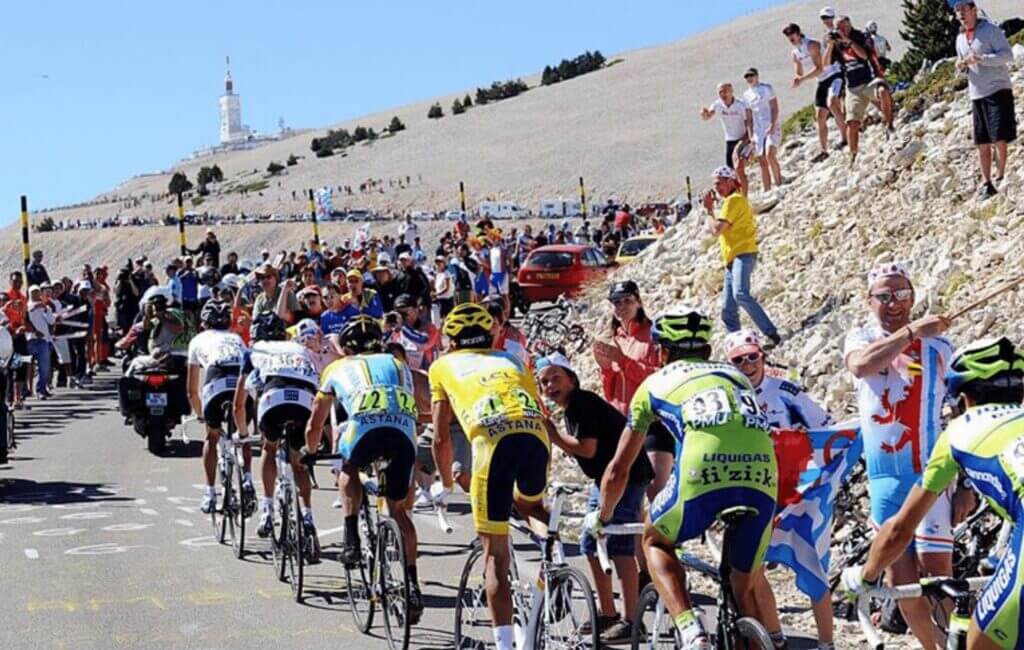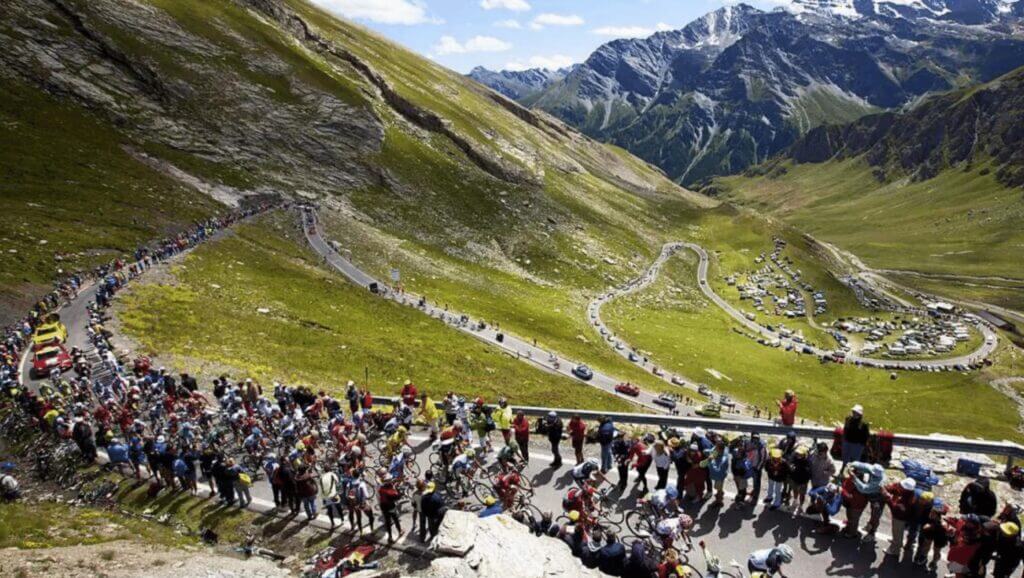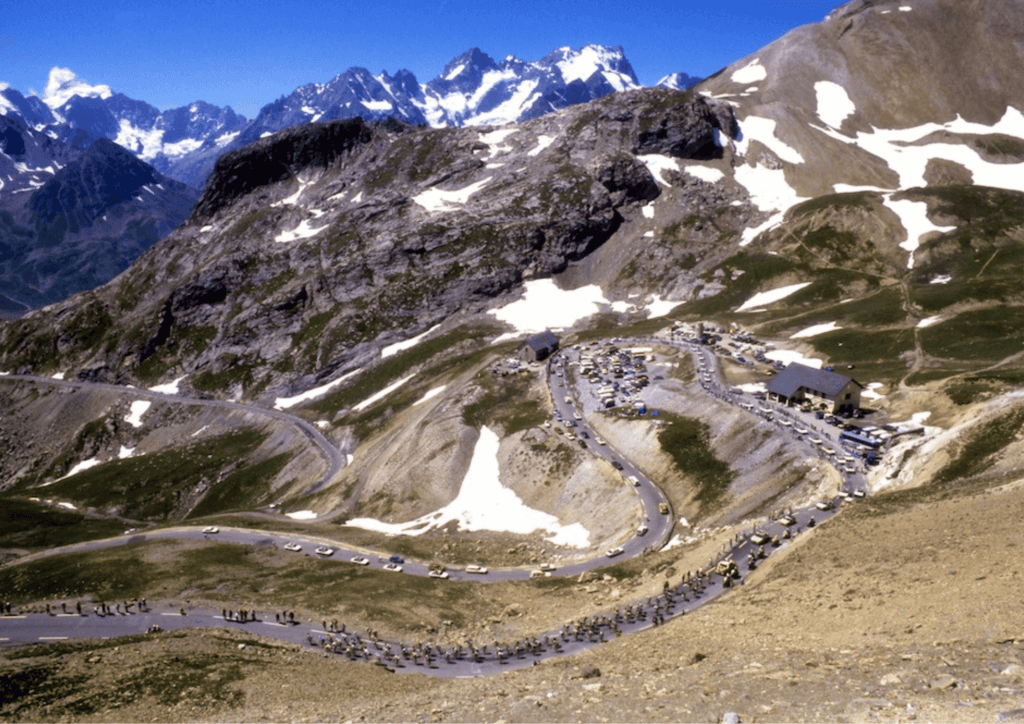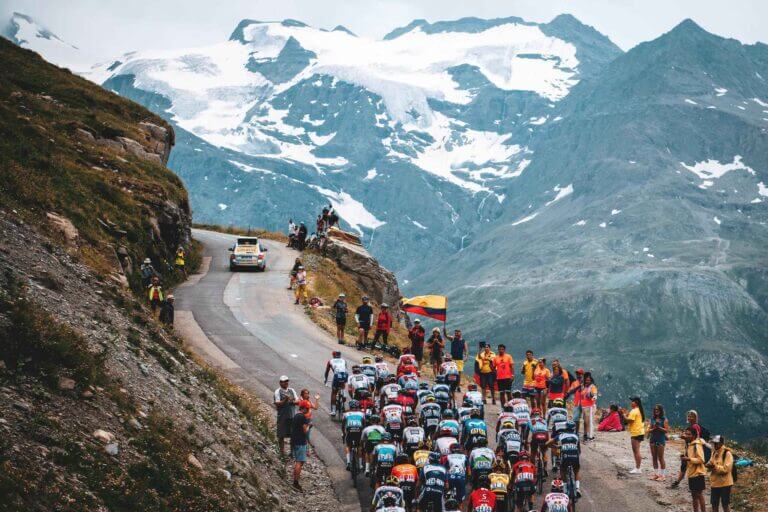Every fan of the Tour de France eagerly awaits the arrival of its iconic mountain stages, as these majestic peaks not only test the physical prowess of the cyclists but also provide a dramatic backdrop for the unfolding race.
Against the breathtaking beauty of these mountains, intense battles are fought, personal limits are pushed, and extraordinary feats of athleticism are accomplished.
In this article, we will delve into the rich history, statistics, and memorable moments associated with some of the most challenging mountain stages in the Tour de France. These legendary mountains have witnessed some exhilarating battles that separate the contenders from the rest.
The Majestic Mont Ventoux

Nestled in the picturesque region of Provence, Mont Ventoux rises like a monolithic sentinel, commanding respect from all who dare to challenge its slopes. This legendary mountain has become an iconic symbol in the Tour de France, renowned for its grueling ascent and its ability to test the limits of cyclists. With a length of 21.4 kilometers, an average gradient of 7.5%, and a maximum elevation of 1,912 meters, Mont Ventoux presents a formidable test of endurance.
Mont Ventoux has a rich history in the Tour de France, with its first inclusion in the race dating back to 1951. Over the years, it has witnessed numerous memorable moments and epic battles that have defined the race. One of the most poignant moments occurred in 1967 when British cyclist Tom Simpson tragically lost his life on the slopes of Mont Ventoux due to exhaustion and heatstroke. This tragic event serves as a somber reminder of the mountain’s unforgiving nature and the extreme physical and mental demands it places on the cyclists.
Mont Ventoux also witnessed a gripping battle in the 2013 Tour de France. On a day marred by extreme weather conditions, including rain, fog, and strong winds, Chris Froome showcased his exceptional climbing skills to claim a decisive stage victory, further establishing his dominance in that year’s race.
Aside from its historical significance, Mont Ventoux offers a unique and awe-inspiring landscape. Often referred to as the “Giant of Provence,” its barren, lunar-like terrain sets it apart from other mountains in the Tour de France. As cyclists ascend its slopes, they encounter challenging winds and shifting weather conditions, further intensifying the drama of the race.
The Treacherous Col du Tourmalet

Located in the French Pyrenees, the Col du Tourmalet stands as a legendary obstacle that has tested the mettle of countless cyclists in the Tour de France. This imposing climb has earned its place in the race’s history as the highest paved mountain pass in the Pyrenees, reaching an elevation of 2,115 meters. Since its inclusion in the Tour de France in 1910, the Col du Tourmalet has been a battleground where champions are made and contenders falter.
Stretching across 17.1 kilometers with an average gradient of 7.3%, the Col du Tourmalet presents a formidable challenge. Its winding roads and steep ramps demand a perfect balance between strength, endurance, and strategy. Cyclists face not only the physical demands of the climb but also the unpredictable weather conditions that can quickly change from sunshine to snow or fog.
Throughout its storied history, the Col du Tourmalet has witnessed countless dramatic moments in the Tour de France. It has been the setting for remarkable solo breakaways, epic duels between cycling titans, and breathtaking comebacks. The fans who line the route, cheering and encouraging the cyclists, create an electrifying atmosphere that adds to the drama and spectacle of the race.
The 2010 Tour de France featured a memorable duel on the slopes of the Col du Tourmalet. Andy Schleck and Alberto Contador engaged in a captivating battle, with Schleck attacking and leaving Contador behind. This stage provided a breathtaking display of determination and strategy, leaving fans on the edge of their seats until the very end.
The Daunting Alpe d’Huez

Situated in the heart of the French Alps, Alpe d’Huez has cemented its place as one of the most iconic climbs in the Tour de France. With its 21 hairpin bends and relentless gradients, this mountain is a true test of both physical and mental strength. Spanning 13.8 kilometers with an average gradient of 8.1%, Alpe d’Huez leaves no room for respite as cyclists navigate its challenging switchbacks.
The inclusion of Alpe d’Huez in the Tour de France dates back to 1952, and since then, it has become synonymous with dramatic battles and legendary performances. Its legendary 21 switchbacks, each marked with the name of a past winner, have witnessed thrilling duels and daring attacks that have shaped the outcomes of races. The passionate fans who line the route, numbering in the tens of thousands, create an atmosphere of pure cycling fervor, further intensifying the drama of the ascent.
Alpe d’Huez has seen numerous iconic moments that have become etched in Tour de France history. In 1986, Greg LeMond and Bernard Hinault engaged in an intense battle on Alpe d’Huez. LeMond attacked with incredible force, demonstrating his climbing prowess and securing the stage victory. This memorable duel between teammates showcased the competitive nature of the race.
The climb up Alpe d’Huez in 2001 witnessed one of the most remarkable comebacks in Tour de France history. Lance Armstrong, facing a considerable deficit, launched a stunning attack on this daunting mountain. Armstrong’s incredible display of strength and determination propelled him to victory, solidifying his status as a cycling legend.
Beyond its sporting significance, Alpe d’Huez boasts breathtaking vistas of the surrounding mountainous landscape. As cyclists ascend its slopes, they are treated to stunning panoramic views, rewarding their efforts with an awe-inspiring backdrop.
The Brutal Col du Galibier

Standing tall over the French Alps, the Col du Galibier is a true monument to the challenges faced in the Tour de France. With an imposing altitude of 2,642 meters, a length of 23 kilometers, and unpredictable weather conditions, the Col du Galibier demands absolute dedication and resilience from cyclists. Its relentless gradients and breathtaking scenery make it one of the most feared climbs in the race.
The inclusion of the Col du Galibier in the Tour de France dates back to 1911, and it has since witnessed countless memorable moments and epic battles. Cyclists must confront not only the physical demands of the climb but also the potential hazards brought by unpredictable weather, such as strong winds and sudden temperature drops. The mountain’s iconic appearance, with its rugged peaks and snow-capped vistas, adds to the dramatic allure of the race.
The Col du Galibier has seen remarkable solo breakaways, thrilling attacks, and hard-fought battles that have left an indelible mark on the history of the Tour de France. Its epic beauty and brutal challenge have made it a legendary mountain that both captivates and terrifies cyclists.
In 2011, the climb was featured as the highest point in the race, reaching an altitude of 2,645 meters. On this challenging stage, Andy Schleck showcased his climbing prowess, leaving his competitors behind and conquering the brutal slopes of Col du Galibier to secure an impressive victory.
The 2019 edition of the Tour de France saw an epic battle on the Col du Galibier. With the finish line located atop the mountain, the stage was set for an exhilarating showdown. As the race unfolded, Egan Bernal displayed exceptional strength and resilience, launching a decisive attack on the final climb. Bernal’s memorable performance on Col du Galibier propelled him towards becoming the overall winner of the 2019 Tour de France.

